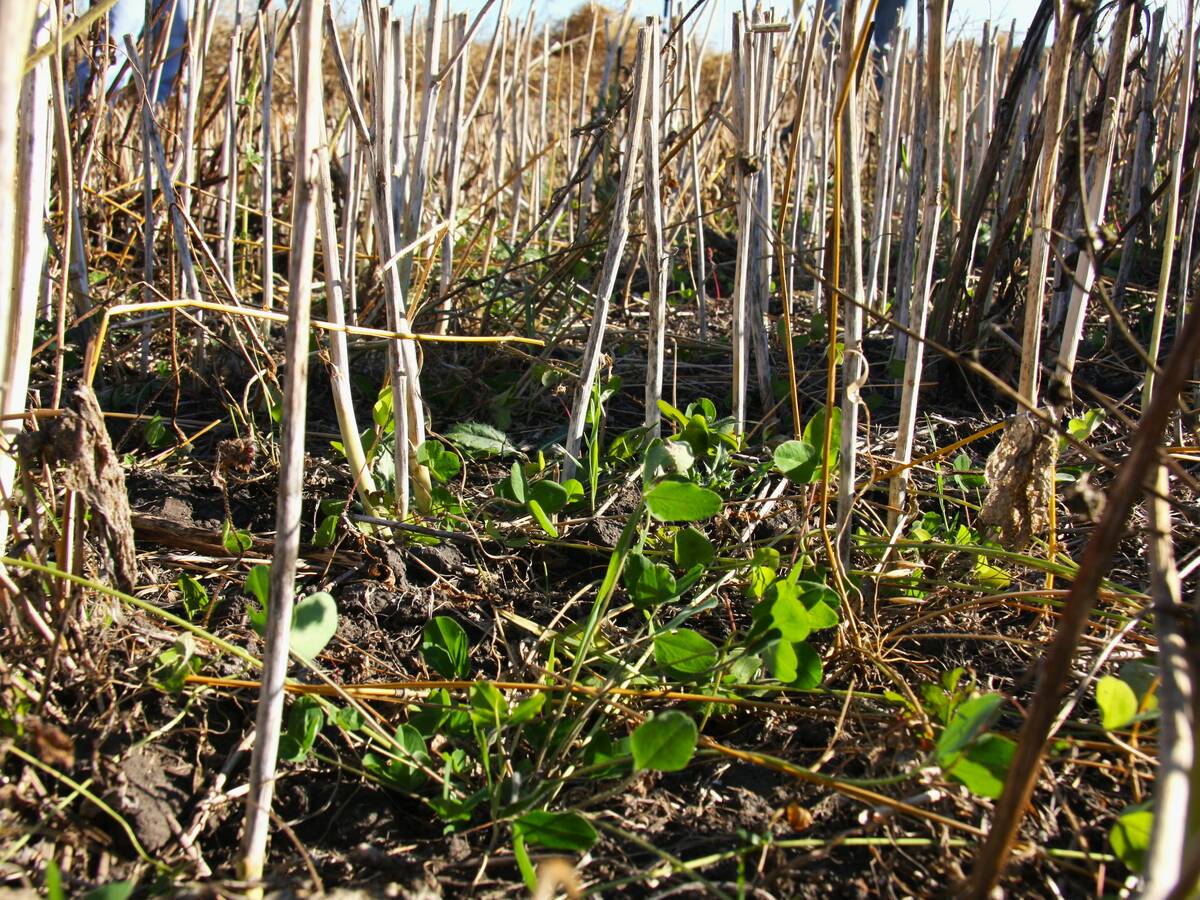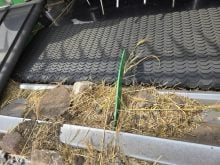Most semi-truck tires see at least one retread, with some going up to four times, as long if the casing hasn’t been damaged. The recap stigma seems to have disappeared.
The tire-use pattern is much the same for all firms. Fleet owners begin by putting new high-quality steer tires at the front. Once they need replacing, used steer tires start their trip toward the back of the tractor, then on to support the back of the trailer, then to recycling.
They get recapped for one stint or maybe two as drivers, then go to the retread shop so they can serve one or two tours of duty under the trailer. By this time, the casing is beyond the usable stage.
Read Also

Saskatchewan project sees intercrop, cover crop benefit
An Indigenous-led Living Lab has been researching regenerative techniques is encouraging producers to consider incorporating intercrops and cover crops with their rotations.
Trapper’s Transport in Winnipeg follows a similar pattern, according to maintenance foreman John Grobbner. In a phone interview, he said Trapper’s always starts the process with Michelins as steer tires. From there they follow the path toward the trailer and eventually out the back door.
“Trapper’s only buys Michelin tires. We analyzed cost and longevity and figured Michelin casings gave more cycles. More cycles cut our costs,” said Grobbner in a phone interview, adding they only use the Michelin recapping process provided by Denray in Winnipeg. He said they previously used Bandag retreading but switched to the Michelin process. The Denray retread plant is located in Neepwa Man.
“The only issue we’ve had with this strategy is when we buy a new tractor, it automatically comes with off-shore tires. They can only be recapped once or twice, then the casing is shot. So, we don’t get our money’s worth out of them.
“Whereas if you start with a virgin Michelin tire with a quality casing, you can recap at least three times. After the second recap, it’s money in the bank. Sometimes we get four uses out of a casing.”
He said that Trapper’s has a strict barcode tire tracking system to ensure the proper procedure is followed. When a load of casings go to Denray for recapping, every tire is accounted for through so they know the exact status of each tire once it goes back into their inventory. This information tells them how to use each tire.
Grobbner said firms that once bought only new tires now buy only recaps. The escalating price of rubber is naturally passed on to the truckers. Saving $300 per tire times 18 tires pencils out to a whopping $5,400 per truck.
David Schritt retired from Kindersley Transport after doing long haul for 12 years, roughly the period in which tire technology took big steps forward. He said there’s nothing wrong with today’s recaps, as long as you put them on a high-quality casing, but he parts ways with Grobbner in his opinion on who delivers the needed quality, at least for the driver wheels.
“You can’t use Michelins,” Schritt said. “Michelins aren’t very good for recapping. Toyo, Goodyear, Goodrich and Continental casings are all pretty good for recapping. That’s what our Kindersley tire techs told us.
“But for steer tires, Michelins are the best. Michelins are the only tires I allowed for steer tires on my trucks,” Schritt said in a phone interview. He emphasized it’s different for farm semis.
“I hauled silage this year. On gravel roads, recaps of any kind don’t last long. Farmers are on gravel roads. Gravel just chews their tires to crap, especially the drivers. If you go really slow, like 70-k, tire wear on gravel isn’t so bad. The speed limit is 80-k and most guys go 90 and higher.
“I ran a lot through the mountains where you have to chain up.”
“Most places it’s mandatory if conditions merit. But when you have a new driver who doesn’t know how to chain up properly, they can wreck the tire and lose the chain in just a few miles.”
Tolv Pinckney runs hydravacs and over the road rigs in the Bakken oil fields. He buys new Generals for the drivers and trailers. He’s never bought recaps.
“I’ve had recaps that were already on trucks I’ve bought, and those treads peeled off. I’ve got one of those trucks right now with recaps, and the wear pattern is just the craziest thing. I’ve had the drives in for alignment and they said everything was set the way it’s supposed to be. No problem. It’s just what happens with retreads.”
At Kal Tire, company representative Colin Rafferty said rubber prices have experienced enormous jumps since COVID began. These increased costs are reflected at every stage in bringing tires to customers. Every tire customer, farmers included, bears the brunt of these increases. And this pushes more people to buy recaps.
“When you can buy a recap for 30 percent to 50 percent the cost of a comparable new tire, it can be a pretty easy decision,” said Rafferty in a phone interview.
“Modern recaps are as good and last as long as brand new Tier One tires from Bridgestone or Michelin or Goodyear. Every time people see chunks of rubber on the road shoulder, they automatically assume that’s a recap. Not necessarily so. Take a closer look. If there’s steel cord in the cap, that means it’s a new tire. American research shows that retread tires fail at the same rate as new tires. A puncture or low tire pressure is what causes a flat — new tire or recap tire.
“People don’t realize that 80 percent of commercial crafts in North America run only retread tires. Look at your nearby school buses. Nearly every fire engine and school bus in Canada runs on recaps on the drives. My thinking is that if a 747 can take off and land on recaps, then they should be good for highway tractors.”
Rafferty said there’s also a significant environmental factor. Every time a plant recaps a used casing, it equates to leaving those resources in the ground. A retreaded tire requires 15 gallons less oil and approximately 90 to 100 pounds less total material than a new tire.
Rafferty said Bandag is still the largest retreading process, accounting for half the re-treading in North America. The newer Michelin process is competitive and Rafferty thinks the quality to is equal.
















